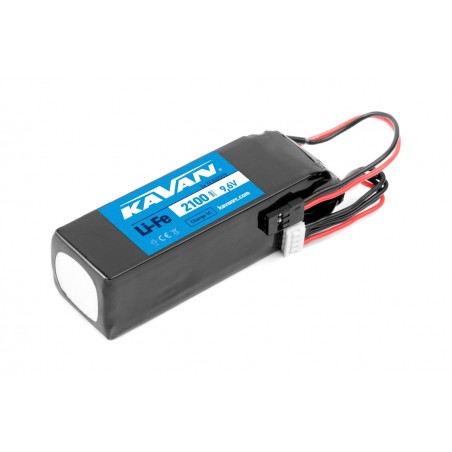- Out-of-Stock






Kavan lithium-phosphate (LiFe) batteries for RC transmitters. They are characterized by high energy "density" providing high capacity with relatively low weight and small size. Thanks to the advanced technology used in the production of the electrodes, they allow fast charging - with a long service life and a favorable purchase price.
BASIC FEATURES OF Kavan LiFe ARTICLES:
The nominal voltage of LiFe cells is 3.2 V. During operation, the cell voltage must never exceed 3.6 V during charging and must not drop below 2.5 V during discharging. Exceeding these values can cause irreversible damage to the battery. For this reason, special chargers for LiFe batteries should be used for charging. Failure to follow the correct charging procedure, as well as short-circuiting the cell, leads to overheating of the cell and its damage by the resulting gases. In extreme cases, the chemical reaction can involve the risk of exploding the cell. LiFe batteries are safe if handled properly, do not underestimate this danger.
CHARGING Kavan LiFe battery packs
Always use a special charger designed for LiFe batteries for charging. It must be equipped with automation to ensure that the maximum allowable voltage of 3.6 volts (+ 1%) per cell is not exceeded. Do not charge Kavan LiFe batteries with a current higher than 1C *, for normal operation we recommend using currents in the 0.5-1C range. We recommend using a balancer for each charge.
We also recommend checking the voltage of the individual cells of the kit before charging. If the voltage of the cells is lower than 2.8V, it means you are overcharging them and overcharging them during operation.
Unlike NiCd and NiMH cells, LiFe batteries do not require pre-forming, but if you intend to charge kits at 1C, we recommend not exceeding 0.5C for the first three charging cycles. LiFe batteries also do not need to be discharged before charging - you can, for example, charge batteries that are 50% discharged.
OPERATION OF LiFe BATTERIES
Use only equipment designed to work with LiFe batteries. Try to avoid placing heavy loads on batteries if their remaining charge is less than about 20-25% of rated capacity (less than 3.0 volts per cell). LiFe cells of any brand are sensitive to overcharging in this area, leading to a shorter life.
Protect the battery from vibration and other shocks and impacts.
STORAGE
Batteries are stored in a partially charged state, the voltage on individual cells should be between 3.30-3.35 V. If the batteries are stored for a long time, they should be checked at least every 3 months and charged to the storage voltage.
FOXY LiFe PACKS
Charging (power) cables are equipped with standard JR / Graupner servo connectors, all kits are equipped with a standard JST-EH system service connector.
Specifications:
Always use the battery according to the enclosed instructions !
An improperly used or stored battery can cause irreparable damage to the cell, or even fire or explosion !